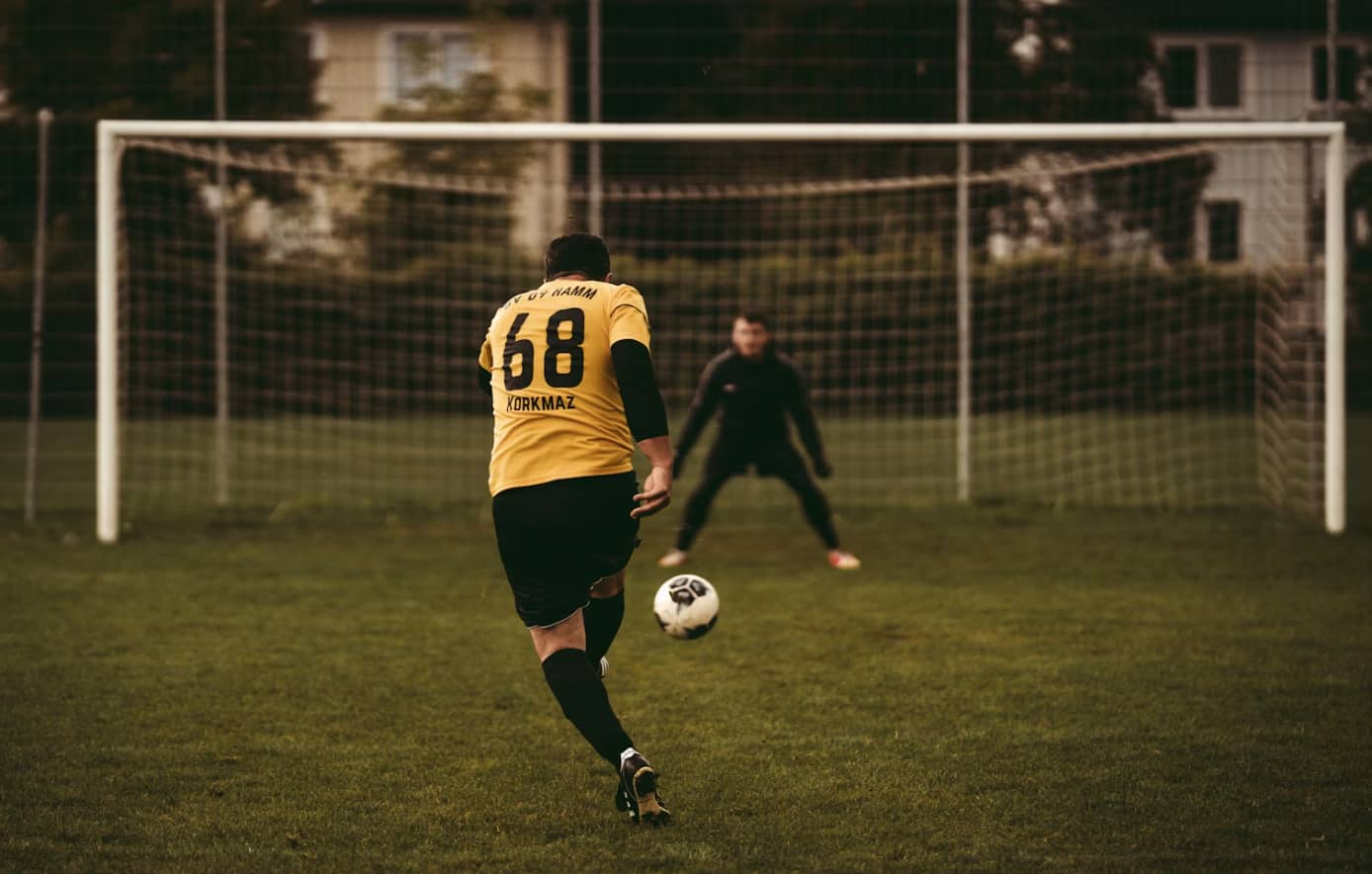It’s match day, and you’re in your seat in the stadium or on the couch at home, eager to see your team emerge from the tunnel in their iconic colors.
A club’s kit is more than fabric and stitching; it’s a potent symbol of what the team represents, its values, and its history.
You may even be wearing a replica shirt yourself.
However, teams can’t always wear their home kits — there are a few reasons that soccer teams use different colors, second, third, or even fourth kits to play in certain matches.
Some of those reasons are obvious, others not so much.
Contents
How Do Teams Decide What Shirt to Wear?

Let’s delve in and have a look.
Soccer Kit Rules and Regulations
Soccer governing bodies such as FIFA, UEFA, and national bodies have strict rules and regulations pertaining to who wears what and when.
The rules are designed not only for tradition and branding but also for a more practical purpose: on-field clarity.
Teams need to be able to easily distinguish between themselves and their opponents, as well as match officials who need to be able to tell the difference.
The same goes for spectators, who could be confused by a kit color clash during the game.
This is why, even if there is only a slight clash or a different shade, you’ll often see a team sporting one of its backup kits during a soccer match.
Who Decides?
In domestic soccer, the home team will traditionally wear its home kit for a match.
For instance, when Arsenal face Manchester United — both of whom wear red — at the Emirates Stadium (home of Arsenal), it falls to Manchester United to choose an appropriate alternative.
When the fixture is reversed, Arsenal will sport different colors for their home kit.
For major tournaments, matches are determined by the governing body, such as FIFA in the World Cup, with one team deemed the ‘home’ side and the other the away team.
The colors of each team are determined in advance to avoid any clash whatsoever.
This may seem harsh on the ‘away’ supporters due to the tribal nature of supporting their side or nation, but it’s a practicality that can’t be avoided.
Kits
Teams nowadays have three kits: a home, an away, and a backup.
When we think of first team designs, we think of soccer history’s iconic kits — Celtic’s hoops, Barcelona’s blaugrana stripes, or Liverpool’s all-red outfits.
Second kits will feature contrasting colors, usually bold and in stark contrast to the home kit.
This is simply to avoid any clashes with other common home colors in the league.
Third kits are often redesigned year on year, but are mainly for multiple clashes — for instance, if a home kit is white and the away kit is red, and the opponent’s home kit is striped red and white, a third kit ensures there is a playable option.
Goalies and Officials
We often see bright and patterned designs worn by goalkeepers. Whilst this often looks rather snazzy, there is a practical purpose for it.
Goalkeepers must be quickly identifiable by other players and match officials, especially when it comes to handling the ball inside the penalty box.
Officials traditionally dress in black, but it’s common now to see myriad other colors being worn by referees and linesmen, such as yellow (one thinks of legendary ref Pierluigi Collina at various World Cups and Champions League fixtures donning the color).
A Fan’s Perspective
Watching soccer on TV in the black and white era was often very frustrating for fans who couldn’t tell the teams apart, even if their colors were in stark contrast (the deep red of Liverpool vs the dark blue of Everton, for example).
Today, this is less of a problem with modern televisions’ color ratios.
The only fans still affected are color blind ones, who often have problems distinguishing green from red — some leagues request changes if sides wearing these colors meet, meaning that all fans are catered for.
Marketing Perspective
Selling merchandise is a significant source of revenue for any club, and away replica shirts are frequently available for sale.
This means clubs are keen to show off their multiple colors as advertisements for fans to buy them.
Sometimes, a team will even request to wear their secondary colors, even if there is no apparent clash between the two first team kits.
Choosing what shirt to wear in soccer is a careful balance of tradition, regulation, and practicality.
The home side typically gets first choice, governing bodies enforce rules to avoid confusion, and clubs prepare multiple kits to ensure clarity for players, referees, and fans alike.